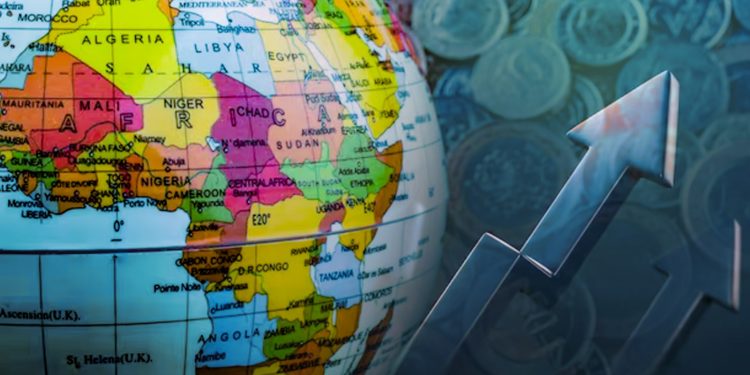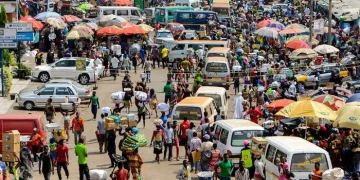Africa Draws Record $97 Billion FDI in 2024 as Reforms Win Investor Confidence
Africa defied a global downturn in 2024, drawing a record US$97 billion in FDI as investors backed reform-driven, future-ready markets. With North Africa leading and digital, green, and logistics sectors prioritised, experts say scaling reforms across more economies is key to sustaining momentum.
Bonface Orucho, bird story agency
Africa attracted a record US$97 billion in foreign direct investment (FDI) in 2024, defying a global downturn in capital flows, according to UNCTAD’s latest World Investment Report released on June 19.
While global FDI fell 11% compared to last year, Africa recorded a 75% surge — the highest of any region.
Even after excluding Egypt’s US$35 billion Ras El-Hekma mega land deal with the UAE, inflows still rose 12%, reaching US$62 billion. The continent’s share of global FDI climbed from 4% to 6%.
According to Fredrick Nyalwal, an economist and member of the Institute of Economic Affairs (IEA Kenya), a Nairobi-based economic think tank, the surge shows investors are targeting future-ready markets.
“Africa is benefiting from a convergence of factors: strong demographic fundamentals, improved investment facilitation, and critical reforms in energy, logistics, and digital policy,” he explained in a call.
Much of the growth was concentrated in North Africa. Egypt, Morocco, and Tunisia all recorded sharp inflows, with a combined spike in renewable energy and infrastructure investments.
Morocco’s FDI rose by 55% to US$1.6 billion, while Tunisia’s jumped 21% to US$936 million. Seven new renewable projects — both offshore and onshore — accounted for over US$17 billion in capital commitments in the region.
Egypt, however, stood out not just for Ras El-Hekma — a coastal smart city project being developed with Abu Dhabi Developmental Holding — but also for doubling its infrastructure finance in 2024.
This contributed to a 15% rise in total international project finance on the continent, even as such finance declined globally by over a quarter.
Greenfield investment, which captures new project announcements, fell across most regions but grew in North Africa by 12%, reaching US$76 billion.
That single region accounted for two-thirds of Africa’s greenfield capital expenditure. Construction and metals led in value, particularly in Algeria and Morocco, while electricity and gas projects declined by US$51 billion, reflecting sectoral recalibration.
Other parts of Africa also remained resilient last year.
“The Ras El-Hekma deal is eye-catching, but the real story is the steady repositioning of Africa’s more reform-minded economies as credible, medium-term growth bets,” Nyalwal added.
Kenya and Rwanda attracted digital and fintech investment, with new hubs and platforms launching amid improving regulatory environments.
In early June, LemFi — a cross-border payments platform with African origins — acquired US-based credit fintech Pillar to expand financial access for credit-invisible immigrants in the UK.
The deal reflects a growing trend of African-led fintechs drawing global capital and scaling services across markets, including in Europe.
“With this acquisition, we plan to offer Credit Cards to customers, starting with the UK and roll out the full suite of LemFi Credit features publicly,” said Ridwan Olalere, co-founder and CEO at LemFi.
In West Africa, Côte d’Ivoire and Senegal continued to draw capital into agribusiness processing and cross-border logistics, partially enabled by AfCFTA incentives and regional reforms.
Skilling is also becoming part of this momentum. In Ghana, over 100 actors in the cashew sector from Benin, Burkina Faso, Côte d’Ivoire, Ghana, Guinea-Bissau, Nigeria, Senegal, and Sierra Leone recently received technical training under an EU-backed initiative aimed at boosting quality and competitiveness.
According to Joseph Addae-Akwaboah, a regional minister in Bono region, such programs enable governments to “develop innovative strategies and investment plans to unlock the full potential of the cashew value chain.”
A key part of the growing capital flows is the broader shift in policy. Across Africa, 36% of all investment policy measures in 2024 focused on investor facilitation.
Countries such as Ghana, Kenya, and Namibia digitized investor services and streamlined approval timelines, while Nigeria and Angola introduced deeper liberalization in energy and extractives to unlock new inflows.
Investor sentiment is also diversifying.
While Europe remains the largest source of FDI into Africa — followed by the United States and China — a pivot in strategy is evident.
China’s investment stock rose to US$42 billion, with growing emphasis on pharmaceuticals, food processing, and clean energy. About one-third of Belt and Road Initiative-linked projects in Africa are now in social infrastructure and renewables, marking a shift from traditional sectors like roads and ports.
Gulf nations are emerging as important players. The Ras El-Hekma deal signalled deepening engagement by the UAE, with other Gulf-backed projects materializing in tourism, logistics, and agro-industrial zones.
These are increasingly aligned with strategic priorities such as food security, global logistics corridors, and Africa’s growing consumer markets.
Africa outperformed other developing regions. FDI into developing Asia fell 3%, while Latin America saw a 12% decline. In contrast, Africa’s inflows grew — particularly in project finance, green energy, and construction. North Africa’s greenfield expansion was among the highest globally.
Not all data was positive, however. Greenfield investment outside North Africa dropped by 37%, pointing to continued investor caution in major economies like South Africa and Nigeria.
According to Nyalwal, “a 37% drop in greenfield investment outside North Africa shows that many economies on the continent are still perceived as high-risk or lacking in investable pipelines.”
Cross-border mergers and acquisitions — typically responsible for 15% of Africa’s FDI — turned negative in 2024, reflecting how tighter credit and geopolitical volatility have dampened deal-making.
Still, the continent’s performance signals a strategic reweighting. Investors appear increasingly responsive to policy clarity, infrastructure readiness, and reform momentum — qualities now more visible in Africa’s most competitive economies. Countries improving sovereign credit ratings, updating industrial policy, and investing in logistics and energy corridors are pulling ahead.
UNCTAD warns that long-term success depends on addressing structural weaknesses. Energy reliability, digital infrastructure, and regulatory coherence remain gaps in many markets.
Nyalwal believes that without these enablers, Africa risks losing momentum as global capital becomes more risk-sensitive and performance-driven.
Even so, the investment narrative is shifting. From large-scale urban developments to climate-aligned infrastructure, investors are engaging with Africa not just as a source of raw materials, but as a platform for value creation, regional integration, and industrial innovation.
“The next frontier is making FDI more catalytic — not just into megaprojects but also into small and mid-sized enterprises, climate adaptation, and cross-border digital infrastructure. That’s where the broader development dividend will come from.”
bird story agency








